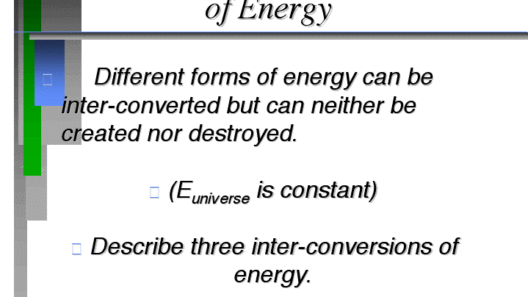The ballistic pendulum, a fascinating experiment in classical mechanics, serves as an exemplary case study for understanding the principles of energy conservation, particularly kinetic energy. The question of whether kinetic energy is conserved within this system captures the interest of many physics enthusiasts and students alike. By delving into this experiment, we can observe the interplay between kinetic and potential energy, allowing us to grasp fundamental concepts that govern motion and energy transfer.
In essence, a ballistic pendulum consists of two primary components: the pendulum bob and the projectile. The bob, suspended from a fixed pivot, is initially at rest, while the projectile, typically a small projectile such as a bullet, is launched toward the bob. Upon collision, two intriguing phenomena occur: the inelastic nature of the interaction and the transformation of energy types.
At the very moment of impact, a critical observation is made. The kinetic energy of the incoming projectile does not remain unchanged. Instead, part of it dissipates as sound, heat, and deformation energy, indicating that the collision is inelastic. In inelastic collisions, the conservation of momentum holds true, but kinetic energy is not conserved. This principle underpins the workings of the ballistic pendulum. Herein lies the conundrum: kinetic energy seems to vanish, yet the total momentum of the system remains intact.
Momentum conservation is a robust tenet of physics; it states that in a closed system, the total momentum before an event must equal the total momentum afterward. Therefore, if we analyze the scenario just before the collision, we find that the momentum of the projectile is precisely equal to the momentum of the combined system of the projectile and the pendulum after the collision. Mathematically, if ((m_p)) represents the mass of the projectile and ((v_p)) its velocity before the impact, while ((m_b)) is the mass of the pendulum bob at rest, we can express the momentum before and after the collision as follows:
Before: (m_p cdot v_p) (projectile momentum) = Total momentum.
After: ((m_p + m_b) cdot v_f) (momentum of the combined system).
By equating these two expressions, we can deduce the final velocity ((v_f)) of the combined mass post-collision. Although momentum is conserved, kinetic energy is not explicitly conserved due to the energy transformations that take place during and after the collision. As the pendulum begins to swing upward, the kinetic energy is converted into gravitational potential energy.
This transition from kinetic to potential energy underscores an important principle: while kinetic energy may not be conserved in its original form, the total mechanical energy within the system can provide insight into energy conservation. As the pendulum ascends, the kinetic energy diminishes, simultaneously increasing the potential energy of the pendulum bob with respect to its height above the reference point.
To elucidate this concept further, consider the energy forms involved throughout the motion. Initially, the kinetic energy of the projectile can be expressed as (frac{1}{2} m_p v_p^2). As the projectile collides and impart energy to the pendulum bob, the systems’ behaviors lead to a maximum height reached by this bob, where all kinetic energy momentarily converts into potential energy ((PE)), expressed as:
(PE = m_b cdot g cdot h),
where ((g)) is the acceleration due to gravity, and ((h)) is the height attained by the pendulum bob. The intricacies of this energy transformation illustrate the broader implications of energy conservation laws.
In order to determine the maximum height achievable by the pendulum after the collision, one must consider the energy equivalency principle. For a perfectly inelastic collision, where the pendulum absorbs the projectile’s energy:
(frac{1}{2} m_p v_p^2 = m_b cdot g cdot h.
Solving for ((h)), we can derive the height to which the bob will rise, indicating that although kinetic energy from the projectile is partially dissipated, the energy conversion allows the system to execute predictable and calculable motion.
The fascination with the ballistic pendulum extends beyond simple mechanics. This experiment invites a deeper exploration of the laws governing physical interactions and energy transformations. It encapsulates delightful nuances: the balance of forces, conservation laws, and the aesthetic beauty of motion—all manifesting in a cyclical dance of energy transfer. Students often find themselves enthralled, not merely by the numbers and equations involved, but by the quest for understanding how energy operates within the universe.
Moreover, the principles extrapolated from this experiment have tangible applications beyond the realm of classroom instruction. They resonate within various fields of engineering, ballistics, and environmental science, where energy transfer mechanisms play a pivotal role in designing efficient systems. Understanding these principles helps to innovate energy conservation technologies that are crucial in combating environmental challenges.
In conclusion, while the kinetic energy of the system is not conserved in the ballistic pendulum during the collision, the underlying principles of conservation laws remain intact. The interplay of momentum and energy—whether kinetic or potential—provides crucial insights into the behavior of physical systems. The ballistic pendulum serves not only as a captivating demonstration of mechanics but also as a gateway to a deeper appreciation of energy conservation, reflecting the intricate tapestry of our physical world.








